Personal account of Lt Col (later Brigadier) James Hill's experiences in North Africa
As an officer and a gentleman you have one perk in the army and that's having a good batman.
The Battalion formed on 15 September 1941 from the 11th Special Air Service Battalion that had evolved from No 2 Commando. They were based at Hardwick Hall near Chesterfield having carried out parachute training at No 1 Parachute Training School at Ringway near Manchester. Jumps were made at Tatton Park from Whitley aircraft, for which soldiers were paid two shillings per day.
In November 1942 they sailed to North Africa as part of the newly formed 1st Parachute Brigade under Brigadier Richard Gale; commanded by Lt Col S J L Hill. Their first mission was to capture and hold Beja, an important road junction on the Souk el Khemis Plain. The jump made from American Dakota aircraft ahead of the 1st Army onto open ground at Souk el Arba was successful. For the rest of the campaign the battalion operated as line infantry. It was during this period the Parachute Regiment earned its nick-name, ‘The Red Devils’ from their German opponents.
The Battalion next saw intense action during the 1st Parachute Brigade parachute assault on the Primosole Bridge in Sicily on 13 July 1943. Commanded by Lt Col A S Pearson they were part of a scattered drop on the Catania Plain, with the 2nd and 3rd Battalions and had to fight a desperate battle for possession of the bridge until relieved by 8th Army. This was followed by the sea-borne attack on Taranto Harbour in Italy with the 1st Airborne Division on 11 September 1943. The Battalion probed as far north as Foggia before being withdrawn back to the UK in preparation for D-Day and was based at Grimsthorpe Castle in Lincolnshire.
On Sunday 17 September 1944 the battalion jumped onto the Renkum Heath west of Arnhem with the 1st Airborne Division during Operation MARKET-GARDEN. During the advance to capture the high ground north of Arnhem Lt Col D Dobie, commanding the Battalion was wounded and taken prisoner. Having sustained severe casualties in the area of Den Brink and the Queen Elizabeth Hospital trying to reach the 2nd Battalion cut-off at the Arnhem Bridge, 1st Para Bn was forced to retire to the Division perimeter that became besieged at Oosterbeek. Reduced to 100 officers and men they defended with Lonsdale Force, until withdrawing across the Rhine to Driel and then to Nijmegen with the survivors of the 1st Division.
It took considerable time before the remnants of the battalion was brought back to strength in the UK. At the end of hostilities in Europe the Battalion was sent to Denmark to assist in the liberation. The 1st Airborne Division was disbanded.
Despite reorganizations in the 6th Airborne Division to which the 1st Parachute Brigade became part, 1 PARA remained untouched, operating in Haifa during the Palestine Mandate troubles until British troops withdrew in 1948. It was then temporarily disbanded on return to the UK with the Division. Those with service to complete were absorbed into the 4th, 5th and 7th Parachute Battalions of the 2nd Parachute Brigade.
The present day 1 PARA was reconstituted from the 4th and 6th Parachute Battalions and re-designated 1st Battalion, The Parachute Regiment at Furness Barracks at Lubeck in Germany, returning to the UK in 1949.
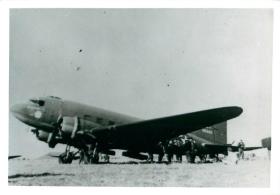
Men from 1st Parachute Battalion emplane a Dakota aircraft for a drop at Souk-El-Arba.
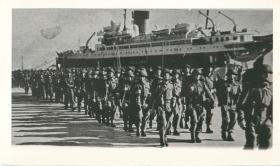
Men from 1st Parachute Battalion disembark from a ship in Algiers, North Africa.
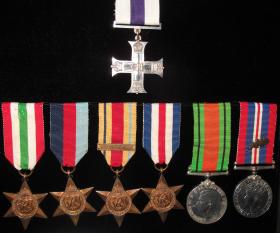
Reverend Robert Talbot-Watkins Medal Set
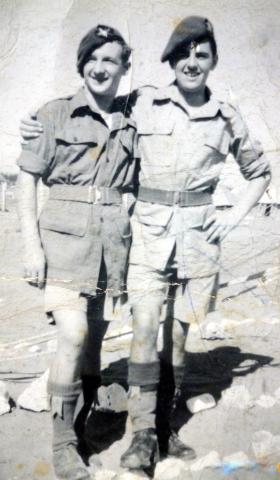
Pte Andy McManus on right, Palestine, c1946.
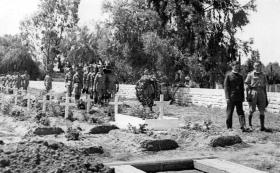
Funeral party for Pte Alexander McBride, May 1946.
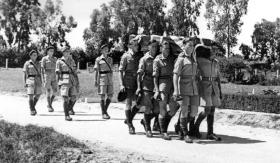
The funeral of Pte Alexander "Jock" McBride, Ramleh War Cemetery, May 1946.
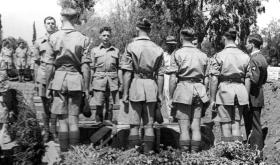
The funeral of Private 'Jock' McBride, Ramleh War Cemetery, May 1946.
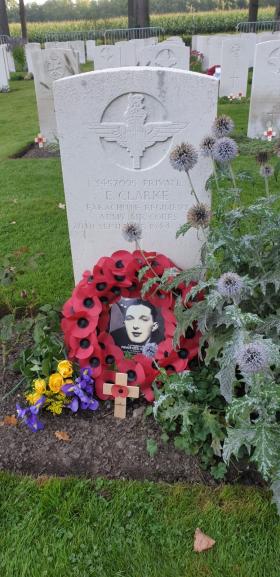
Headstone for Ellis Clarke at Oosterbeek
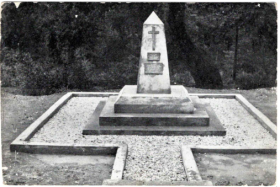
Photographs of Beja War Cemetery, Tunisia
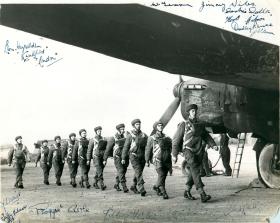
Stick from No 2 Commando emplaning to a Whitley, late 1940
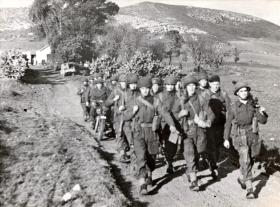
1st Parachute Battalion marching through a hilly landscape, c1942.
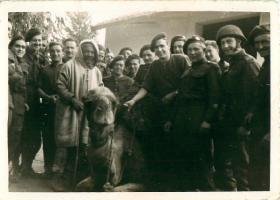
1st Bn soldiers pose with a camel and a local man, North Africa, 1942
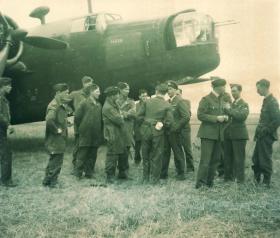
Members of S Coy, 1 Para mingling with RAF crew at Hurn Airfield, 1942
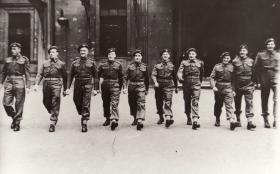
10 members of 1st Para Bn after receiving MMs at Buckingham Palace, 28 March 1944
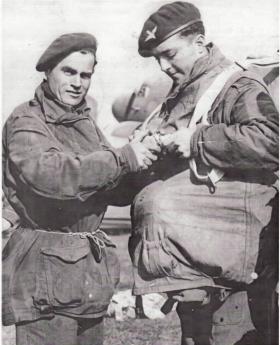
L/Cpl Richards and Nobby Hall of 1 Para, prior to Arnhem
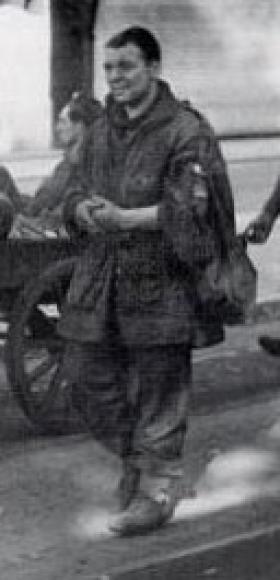
Sgt Manser shortly after his capture at Arnhem.
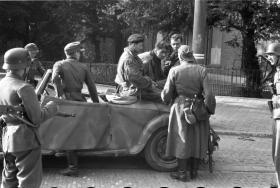
Major John Timothy shortly after being taken prisoner of war, 19 September 1944
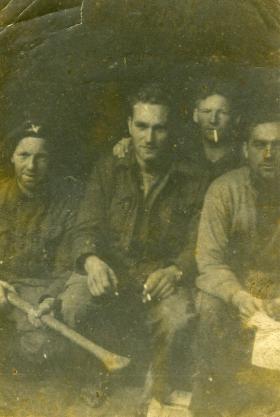
Men of 1st Airborne Division pause after crossing the Rhine to escape Arnhem, 27 September 1944
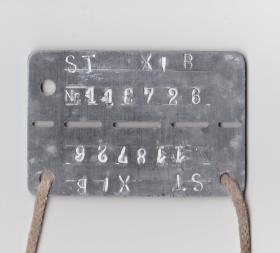
Pte Cyril Turner's PoW tag from Stalag XIB, 1944.
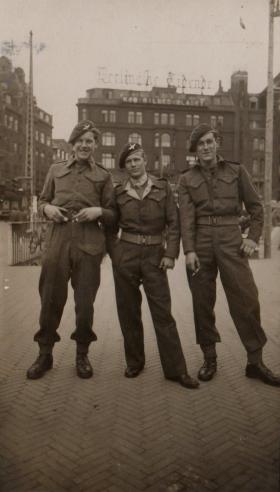
Bernard Taylor, Ron Jones and Cash Casbol In Copenhagen, May 1945
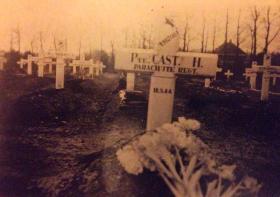
Temporary wooden cross for Private Harry Cast, Oosterbeek Cemetery, 1946.
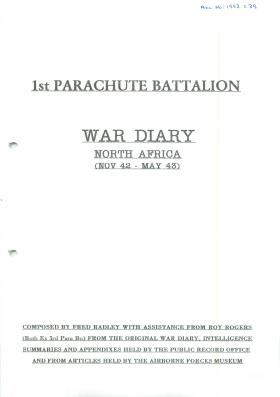
1st Parachute Battalion War Diary, North Africa. November 1942-May 1943.
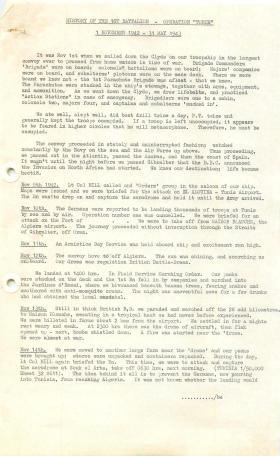
History of the 1st Battalion in Operation Torch, November 1 1942-May 31 1943. Part One.
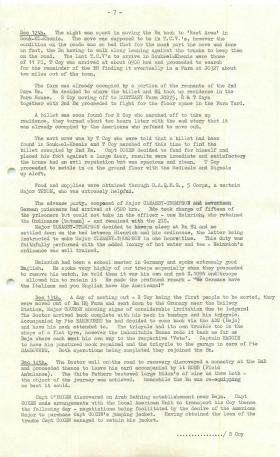
History of the 1st Battalion in Operation Torch, November 1 1942-May 31 1943. Part Two.
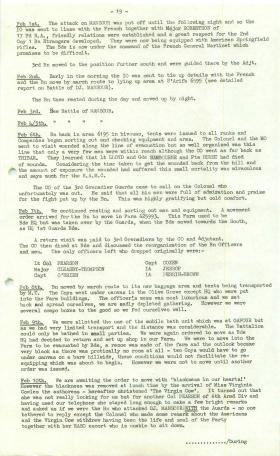
History of the 1st Battalion in Operation Torch, November 1 1942-May 31 1943. Part Three.
1st Parachute Battalion War Diary Appendix 3 Balloon Training Nov 41
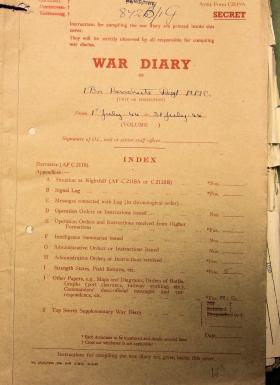
1st Parachute Battalion War Diary, July 1944
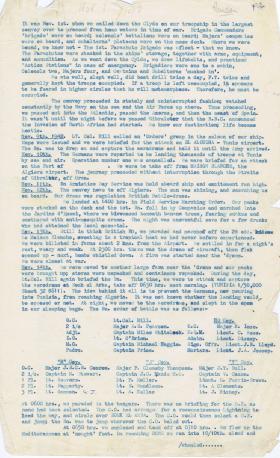
Personal Account by Lieutenant Colonel AS Pearson.
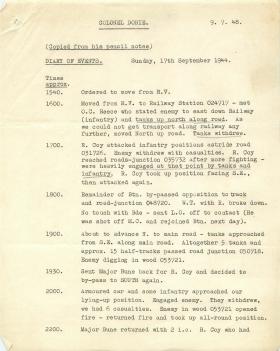
Personal account of Arnhem by Lt.Col David Dobie
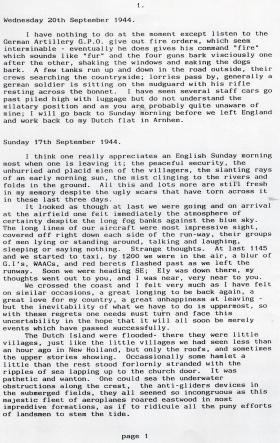
Transcription of Col Dobies Handwritten Diary, Arnhem, Sept 1944.
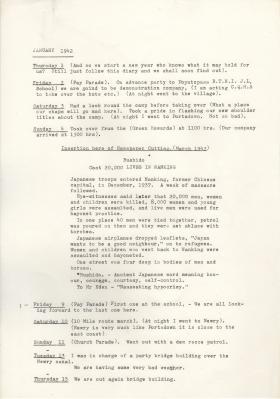
Eric Seal Diary of 1942
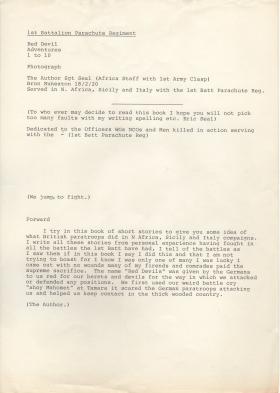
Red Devil Adventures by Eric Seal
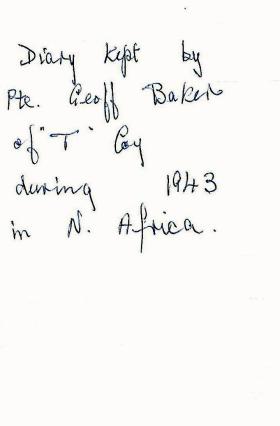
Diary of Pte G Baker, written during Operation Torch, North Africa, 1943.
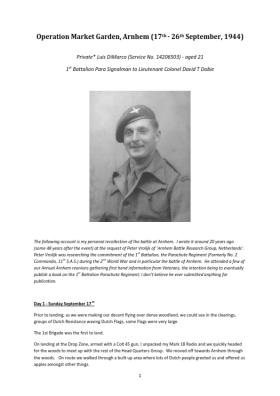
Personal account of Operation Market Garden by Luis DiMarco

Men of No 3 Platoon, R Company, 1st Parachute Battalion armed with Bren gun and No. 4 rifles defend a large shell hole.
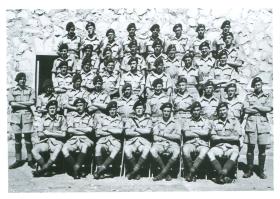
Group shot of 10 Platoon, T Company, 1st Parachute Battalion in Palestine 1945.
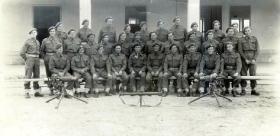
1st Parachute Battalion. Italy, 1943.
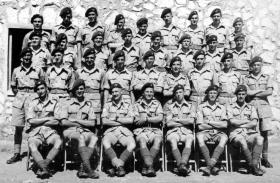
T Company, 1st Battalion, the Parachute Regiment, Palestine 1946.
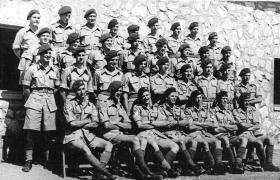
T Coy, 1st Battalion, the Parachute Regiment, Palestine 1946.
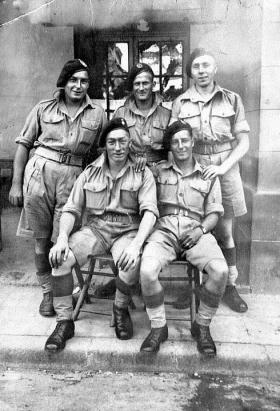
Members of 1st Para Bn, North Africa, date unknown.
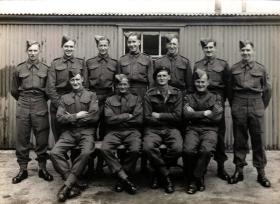
1st Parachute Battalion. June, 1942.
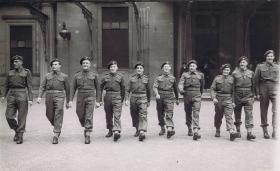
1 Para Bn. Buckingham Palace. 28 Mar 1944. For MM award
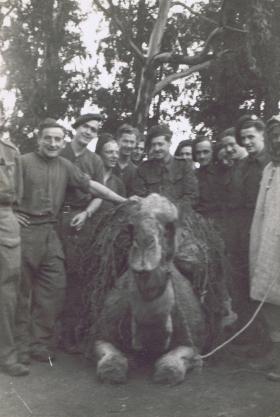
Members of 1st Para Bn pose with camel and handler. N. Africa 1942
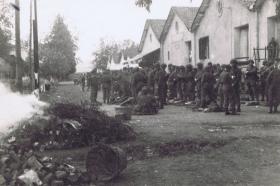
Men of 1st Para Bn in N. Africa November 1942
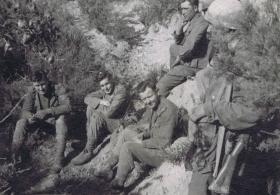
Guarding German prisoners in Tunisia November 1942
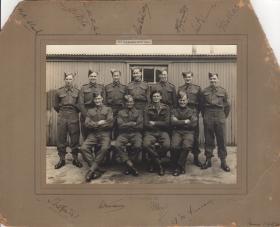
Members of the 1st Para Bn signed photograph June 1942

Harry Cast with members of 1st Bn Italy 1943
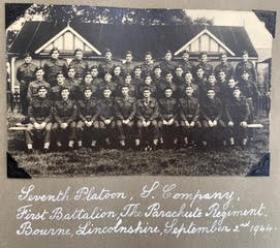
7th Pln, S Coy, Bourne, Lincs September 1944
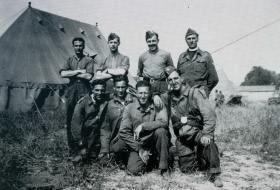
Members of ‘S’ Company’s Mortar Detachment from the Mortar Platoon and the Padre, 1st Bn. Hurn Airfield. July 1942.
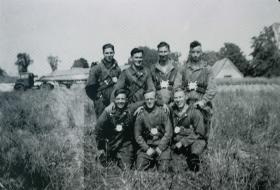
Members of 5 Platoon, ‘S’ Company, 1st Parachute Battalion. RAF Hurn Airfield in Wiltshire. July 1942
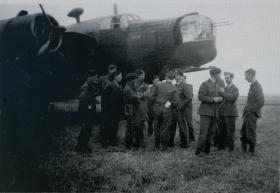
Members of 5 Platoon, ‘S’ Company 1st Para Bn
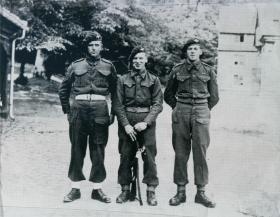
Just after liberation in docks area, near Tivoli Gardens, Denmark. May 1945
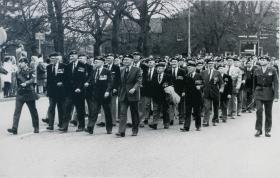
50th Anniversary Parade, marching through Knutsford
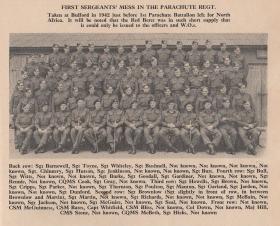
First Sgts Mess in The Parachute Regiment, Buford 1942

Mostly Assault Platoon, Headquarters Company, 1st Parachute Battalion at Barkston Heath aerodrome. Sunday, 17th September 1944.

Mostly MMG Pl (Sp Gp), Headquarters Company, 1st Parachute Battalion at Barkston Heath aerodrome. Sunday 17th September 1944.

On the way to Arnhem. 17th September 1944. 5 Platoon, S Company, 1st Parachute Battalion.

Brigadier Gale and Lt Col Down inspect 1st Para Bn, Ringway, 1941
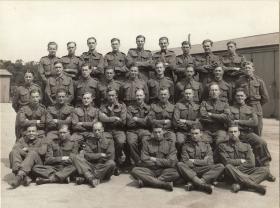
Group portrait of Mortar Platoon, 1st Parachute Battalion, c1942.

Group portrait of 1st Parachute Battalion, Bulford, 1942
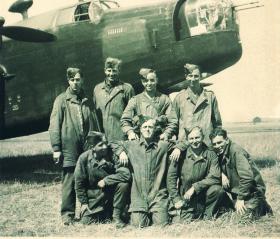
Men from 5 Platoon, S Coy, 1 Para Bn pose for a photo at Hurn Airfield, July 1942
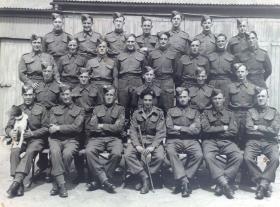
Group photograph, possibly of 2 Platoon, R Coy, 1st Parachute Battalion, c1942
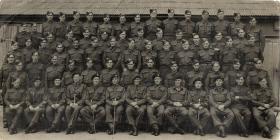
1st Parachute Battalion Sgts Mess c1942
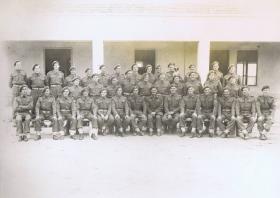
Members of the Mortar Platoon, 1st Parachute Battalion, Barletta, Italy 1943.
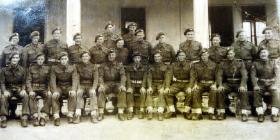
Group Photograph possibly of 11 Platoon, T Company, 1st Parachute Battalion in Italy 1943.
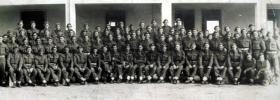
Group photograph of T Coy in Italy 1943.
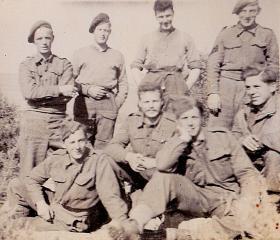
Members of 1st Para Battalion Mortar Platoon, Italy, 25 September 1943.
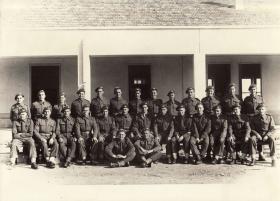
Group portrait of Signals Platoon, 1st Parachute Battalion, Barletta, Italy, October 1943
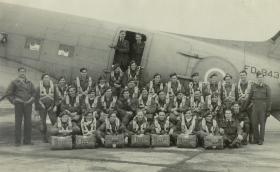
Group Photo of Members of 1st Parachute Battalion, c.1944
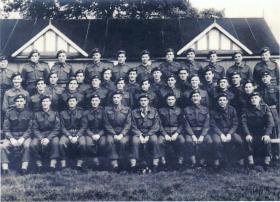
Group portrait of a platoon from S Coy, 1 Para, at Bourne, Lincs, in September 1944 prior to Arnhem
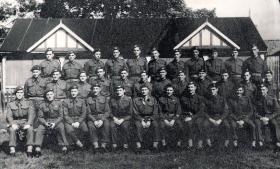
6 Platoon, S Company, 1st Parachute Battalion, UK, 1944
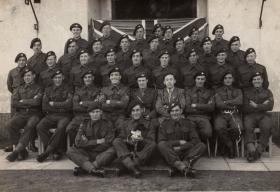
Members of 1st Para Bn (post Arnhem). December, 1944.
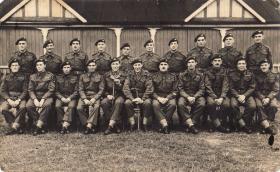
1 Para Officers and Sgts from HQ Coy, Bourne, Lincs, Aug 1945
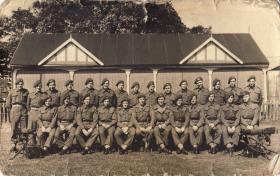
Group portrait of Medium Machine Gun (MMG) Platoon, 1 Para, Bourne, Lincs, August 1945
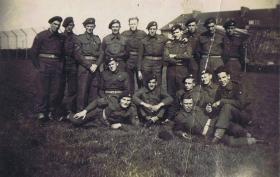
Sgt McCormick with other men from 1st Parachute Battalion in Denmark, 1945
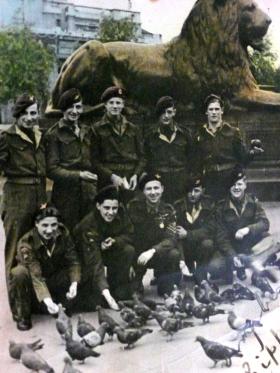
Members of A Company 1st Para Bn in London prior to embarkation to Palestine, 1946.
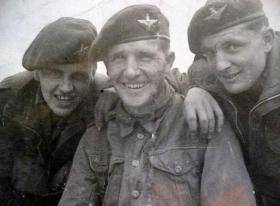
3 members of A Company 1st Para Bn, 1946.
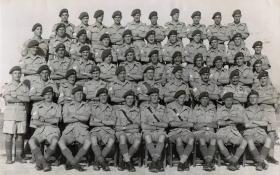
1st Parachute Battalion Sergeants Mess Tul Karm, Palestine - June 1946
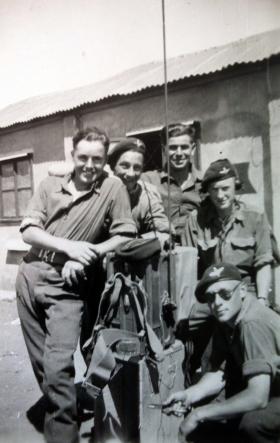
Members of 1st Parachute Bn with No 18 Wireless, Palestine, c1947.
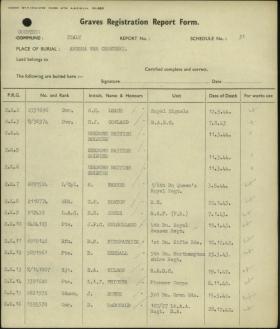
Grave report forms of Pte Lionel Herbert John Brown
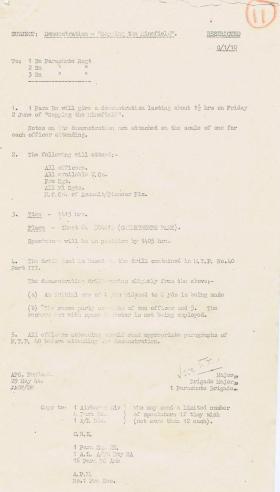
'Gapping The Minefield' Instructions
Godfrey Maguire Service History
Godfrey Maguire North Africa. Note: dates are one year before they happened
Handwritten note by Godfrey Maguire asking for rations
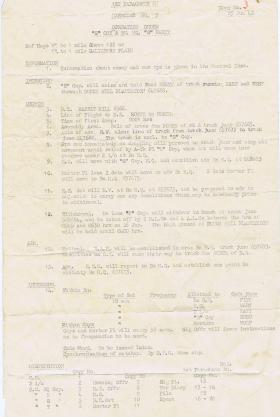
1st Parachute Bn. Exercise no. 5, 1942.
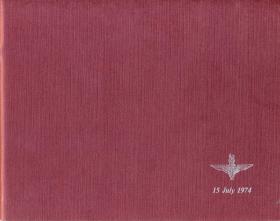
Programme for the Presentation of Colours at Rushmoor Arena, 1974.
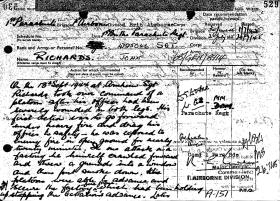
Citation for the award of the Military Medal to Sgt John Richards, Arnhem, 1945.
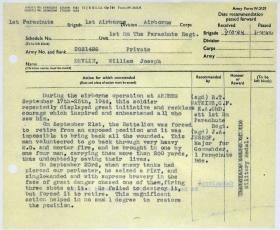
Pte WJ Devlin. 1 Para Bn MM Citation
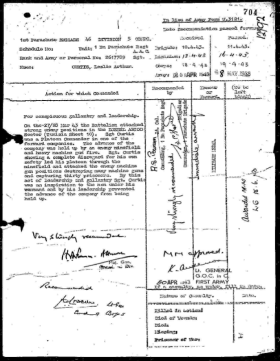
LA Curtis MM Citation
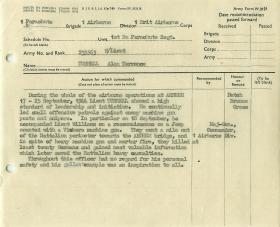
Lt AT Turrell Dutch Bronze Cross citation
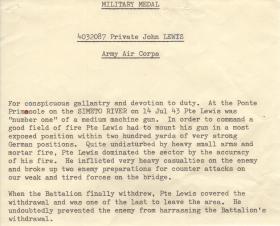
John Lewis MM Medal citation
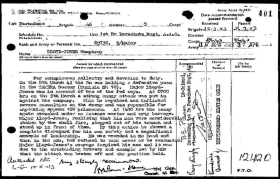
Maj H Lloyd-Jones MC citation 1 Para Bn
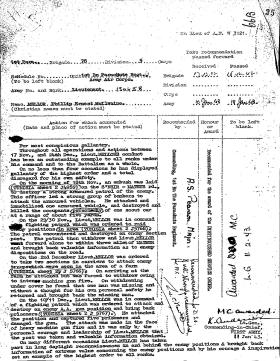
Citation for the award of the Military Cross to Lt Philip Mellors, North Africa, 1943.
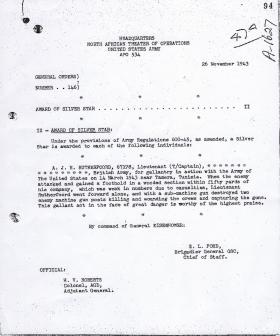
Citation for the award of the Siver Star for T/Capt Rutherfoord, November 1943.
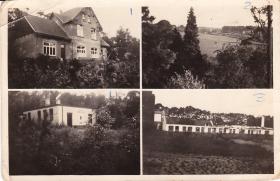
Dutch postcard identifying locations where Pte Cyril Turner was assisted at Arnhem, undated.
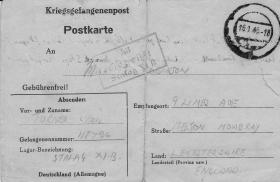
Postcard from Stalag XIB POW Camp sent by Pte Cyril Turner to his wife Ivy, 31 December 1944
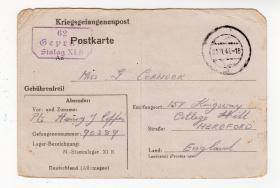
Post cards sent home from Pte Tucker whilst a POW in Stalag XIB
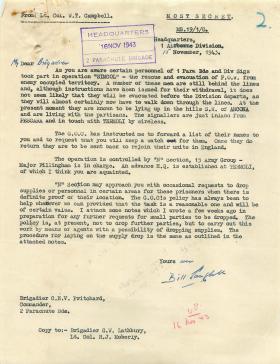
Letter from Lt Col Campbell about personnel yet to return from Op Simcol, 1943.
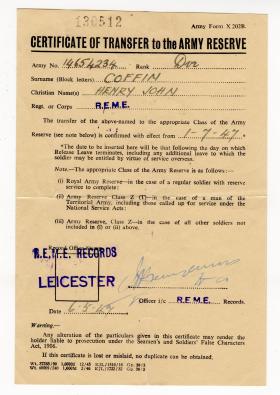
Certificate of Transfer to Army Reserves (REME)
Transfer and Enlistment entry for WJ Devlin
Graves Concentration Report forms from Arnhem
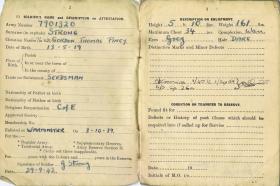
Official documents relating to Sgt GTP Strong MM
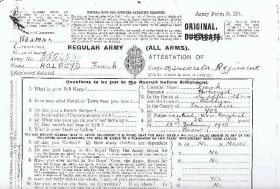
service documents relating to Pte Frank Holroyd
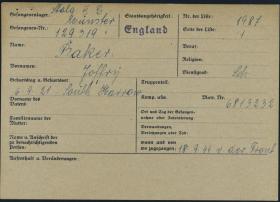
German POW Records for Geoffrey Baker
J Knapper newspaper article
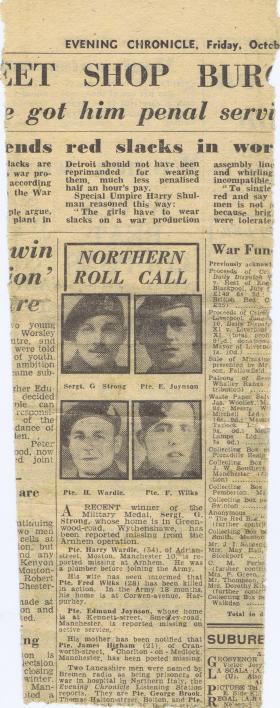
Newspaper cutting Sgt GTP Strong MM
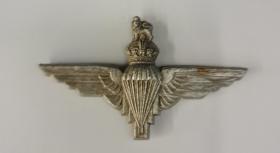
Pte C Myatt (plastic) Cap badge
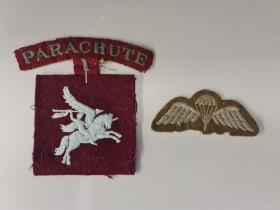
Pte C Myatt insignia
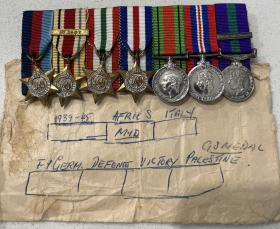
Godfrey Maguire's medals
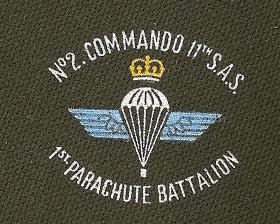
No 2 Commando 11 SAS Association Tie Emblem(circa 2003)
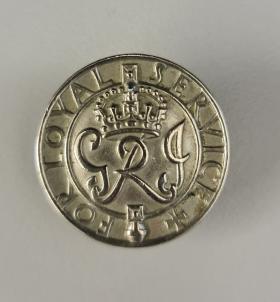
Pte C Myatt Loyal Service badge
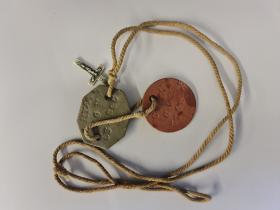
Pte C Myatt ID Discs
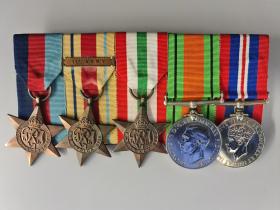
Pte C Myatt medal set
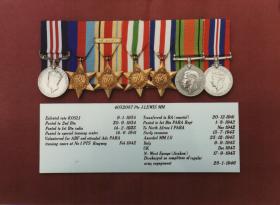
John Lewis Medal set
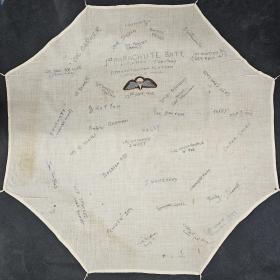
Signatures of T Coy 11 Pln Hardwick Hall 23 Sept 1942
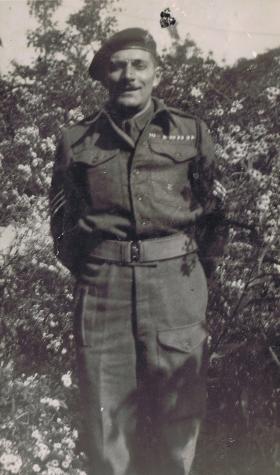
Sgt. G.T.P.Strong. 1 Para Bn. 1940-46
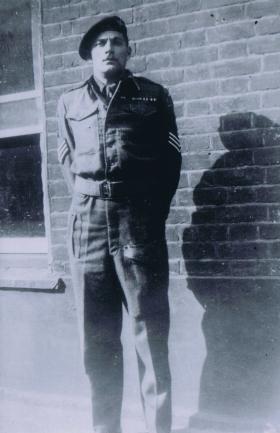
Sgt. Gordon Strong
Sgt. Gordon T.P. Strong on Arnhem Bridge 1990s
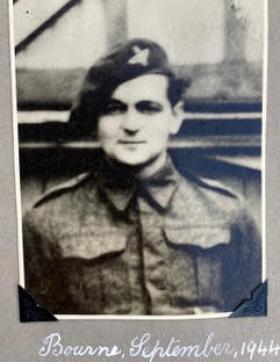
Harry Cast, 1st Bn, Bourne, September 1944
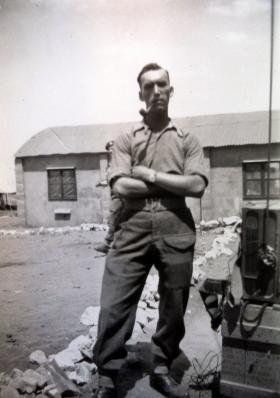
Unknown soldier of 1st Parachute Bn, Palestine, c1947.
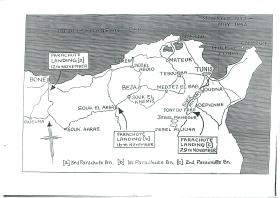
Map of North Africa showing landing zones of 1st, 2nd and 3rd Parachute Battalions, 1942.
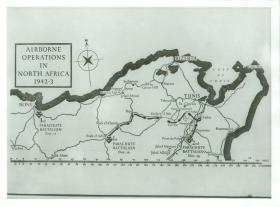
Airborne Operations in North Africa, 1942-3.
Make a donation to Airborne Assault ParaData to help preserve the history of The Parachute Regiment and Airborne Forces
The Airborne Shop is the official shop of Support Our Paras (The Parachute Regiment Charity RCN1131977).
Profits from all sales made through our shop go directly to Support Our Paras, so every purchase you make with us will directly benefit The Parachute Regiment and Airborne Forces.

Latest Comments
There are currently no comments for this content.
Add Comment
In order to add comments you must be registered with ParaData.
If you are currently a ParaData member please login.
If you are not currently a ParaData member but wish to get involved please register.